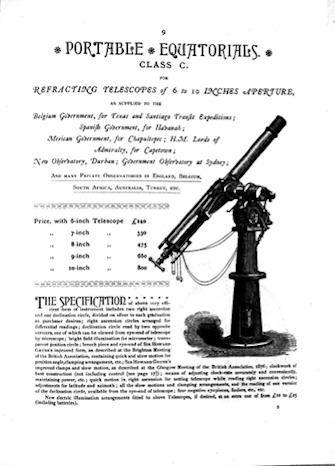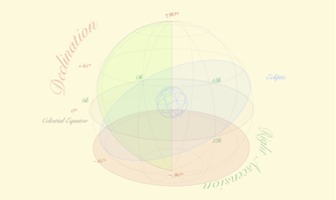Reproducing the declination
circle reading telescope
A star or planet’s position in the sky is described by two sets of coordinates known as declination (comparable to latitude on Earth) and right ascension (comparable to longitude). On Macdonnell’s telescope, an object’s declination is read from the declination circle, a brass disc located beneath the middle of the main tube. The edge of the disc carries scales measuring degrees and minutes, which are read through a secondary telescope that sits parallel to the main tube.
The declination circle reading telescope was missing from the Macdonnell refractor when it was acquired by the Museum. The conservation team developed a design, reproduced the tube and worked with an optics expert to identify the size and style of lenses required to make it functional.
 Zoom
The eyepiece of the declination circle reading telescope
Zoom
The eyepiece of the declination circle reading telescope
 Zoom
Page from Grubb’s 1888 catalogue showing the declination circle reading telescope mounted to the top of the main tube
Zoom
Page from Grubb’s 1888 catalogue showing the declination circle reading telescope mounted to the top of the main tube
 Watch
An animation showing declination and right ascension
Watch
An animation showing declination and right ascension